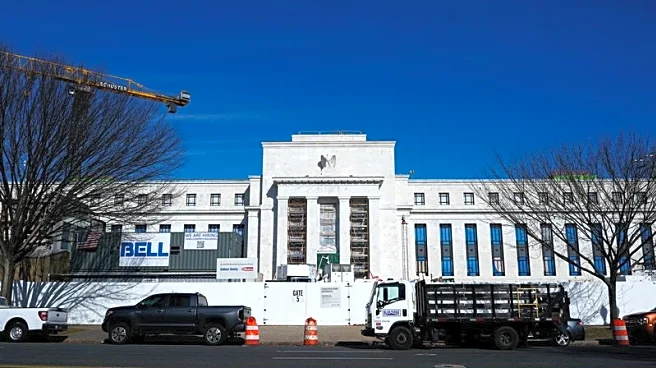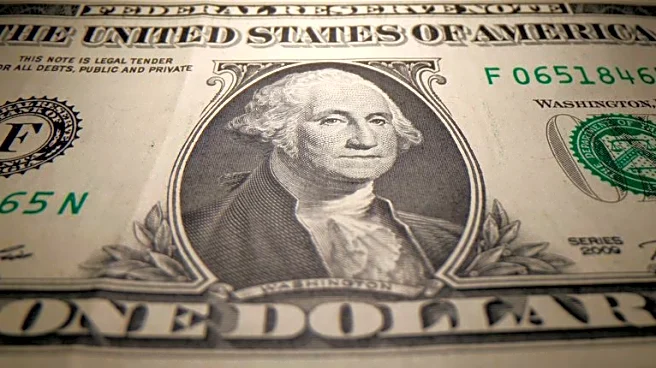What's Happening?
Gold prices have eased following a stronger-than-expected U.S. jobs report, which has reinforced expectations that the Federal Reserve will refrain from cutting interest rates at its December meeting.
The U.S. Labor Department report showed a significant increase in nonfarm payrolls, with September figures rising by 119,000, surpassing the estimated increase of 50,000. This has led to speculation about the Fed's next move, with traders now seeing a 39% chance of a rate cut next month. The dollar has strengthened, making gold more expensive for holders of other currencies. Chicago Fed President Austan Goolsbee expressed unease about frontloading interest-rate cuts, citing stalled progress towards the Fed's 2% inflation goal.
Why It's Important?
The stronger U.S. jobs data and the potential delay in interest rate cuts have significant implications for the gold market and broader economic conditions. Gold, typically a safe-haven asset, tends to perform well in low-interest-rate environments. However, the strengthened dollar and uncertainty around the Fed's monetary policy could impact gold prices and investor strategies. The Fed's cautious approach to rate cuts reflects concerns about inflation and economic stability, influencing market expectations and financial planning. This development may affect investment decisions in precious metals and broader market sentiment.
What's Next?
As the Federal Reserve evaluates its monetary policy, stakeholders will closely monitor upcoming economic data and Fed communications for indications of future interest rate decisions. The market may experience volatility as traders adjust their positions based on evolving expectations. The Fed's decision in December will be pivotal, potentially influencing gold prices and broader financial markets. Investors may seek alternative strategies to hedge against inflation and currency fluctuations, impacting asset allocation and investment trends.













